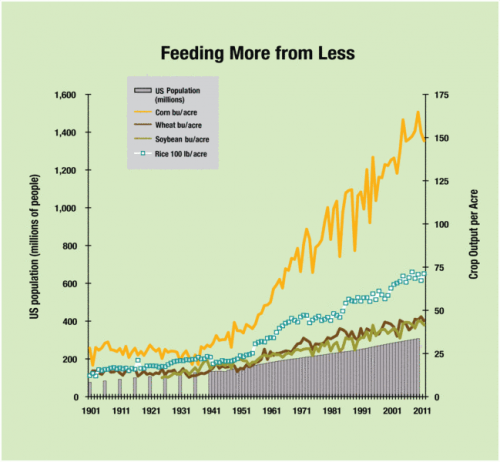From Shawn Regan at PERC, via Arnold Kling
Last year, riding the buzz over dying bees, the Obama administration announced the creation of a pollinator-health task force to develop a “federal strategy” to promote honeybees and other pollinators. Last month the task force unveiled its long-awaited plan, the National Strategy to Promote the Health of Honey Bees and Other Pollinators. The plan aims to reduce honeybee-colony losses to “sustainable” levels and create 7 million acres of pollinator-friendly habitat. It also calls for more than $82 million in federal funding to address pollinator health.
But here’s something you probably haven’t heard: There are more honeybee colonies in the United States today than there were when colony collapse disorder began in 2006. In fact, according to data released in March by the Department of Agriculture, U.S. honeybee-colony numbers are now at a 20-year high. And those colonies are producing plenty of honey. U.S. honey production is also at a 10-year high.
The White House downplays these extensive markets for pollination services. The task force makes no mention of the remarkable resilience of beekeepers. Instead, we’re told the government will address the crisis with an “all hands on deck” approach, by planting pollinator-friendly landscaping, expanding public education and outreach, and supporting more research on bee disease and potential environmental stressors.
I am sure the government, once they have had some bureaucrats running around filing reports and plans for a few years will soon claim credit for the improvement. My prediction: This agency will still be here 50 years from now. You can never kill these things once created. This is only slightly less irritating than politicians who claim that they "created X million jobs" when in office, but only slightly.
Update: Another very similar example: transfats.
The Food and Drug Administration recently moved to eliminate trans fats from the American diet, and food activists and the public-health lobby are claiming a historic victory. Yet this is a rare case of the Obama Administration regulating from behind. Markets had as much to do with the fall of trans fats as government did with their rise.
The FDA’s first restrictions on the use of partially hydrogenated oils as a major source of trans fats in processed foods—think Crisco shortening—give food makers three years to phase out the substance. Evidence began to accumulate in the early 2000s that trans fats were connected to bad cholesterol and cardiovascular diseases. Shoppers and diners concerned about health risks soon started to revolt against the fried and baked goods and the fast-food fare where they were prevalent.
Lo and behold, the food industry responded by changing their recipes and eliminating the oils from some 86% of their products. Trans fat consumption plunged by 78% over a decade, according to the FDA’s estimates, and is now well below the two grams per day that the American Heart Association says is the safe upper limit. The rare survivors of this purge are niche foods like microwave popcorn, frozen pizza and chocolate sprinkles, where trans fats are useful for improving taste and texture.
